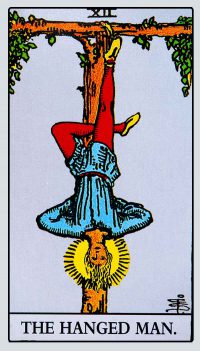Relationships
The querent is on a spectrum between being willing to sacrifice for the relationship and being willing to sacrifice the relationship for something unrelated to love. At times, they may feel like a victim or perceive themselves as such in the relationship. It’s important in the relationship to find a balance between giving and receiving by changing the perspective on the relationship. When this card appears in a reading, it’s clear that there is a charged situation that needs to be examined and understood in depth.
Career
The querent is on a spectrum between being willing to sacrifice for their career and being willing to sacrifice the career for something unrelated to work. At times, they may feel like a victim or perceive themselves as such in their job. It’s important in the workplace to find a balance between giving and receiving by changing the perspective on their work. When this card appears in a reading, it’s clear that there is a charged situation that needs to be examined and understood in depth.
Finances
In financial matters, the querent is facing a significant expense for which they are selling something else.
